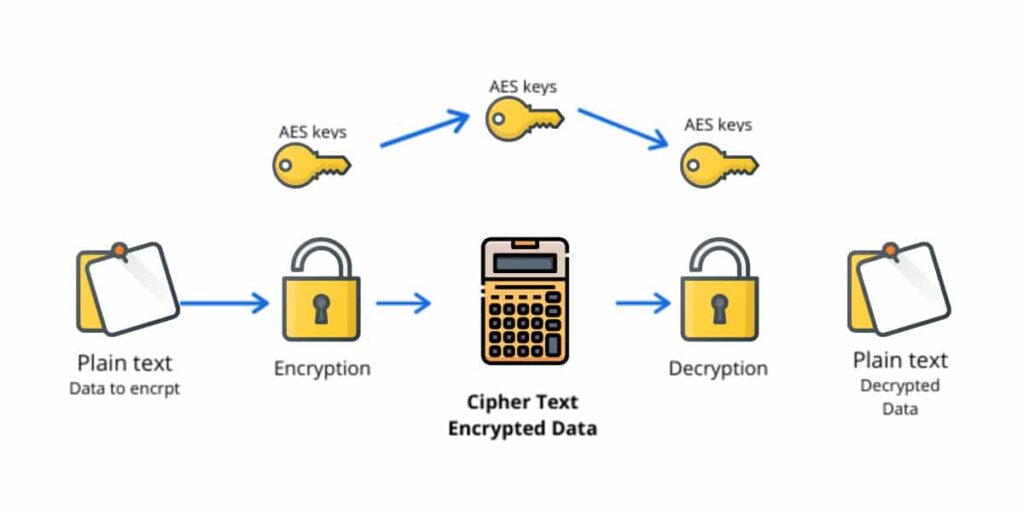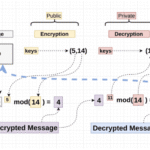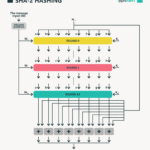In an era where data breaches and cyber threats loom ominously, the need for robust encryption methods cannot be overstated. Among these methods, 256-bit Advanced Encryption Standard (AES) has emerged as a formidable guardian of digital information. Regarded as the gold standard in the field of cryptography, AES-256 encryption is akin to installing a heavy-duty vault, replete with cutting-edge technology, encompassing your sensitive data. This article delves into the intricate workings of 256-bit AES encryption, exploring its architecture, benefits, applications, and the significance it holds in the modern digital landscape.
The Fundamentals of AES Encryption
At its core, the Advanced Encryption Standard is a symmetric key encryption algorithm. This means it employs the same key for both encryption and decryption processes. The term “256-bit” refers to the length of the encryption key used, which directly influences the complexity and strength of the encryption. To put it in perspective, a 256-bit key can theoretically generate 2256 possible combinations, a figure so astronomical that it renders brute-force attacks nearly unfeasible with current computational capabilities.
How AES-256 Works
The AES encryption process involves a series of well-defined steps and transformations that data undergoes. When a file is encrypted, it undergoes a sequence of rounds, with AES-256 utilizing a total of fourteen rounds. Each round comprises several steps, including substitution, permutation, mixing, and key addition, executed in a precise order. This intricate dance of operations ensures that the data, when transformed into ciphertext, becomes incomprehensible to anyone lacking the proper encryption key. The involvement of both a plaintext input (the original data) and a key forms the crux of the encryption process, ensuring that only authorized users may retrieve the original information.
Security Features of AES-256
One of the salient characteristics of AES-256 is its resilience against various cryptographic attacks. Its robust mathematical foundations, underpinned by the concept of diffusion and confusion, make it particularly impervious to linear and differential cryptanalysis. Additionally, the length of the key plays a significant role; as computational power escalates, the sheer length of the 256-bit key offers a protective layer, safeguarding against brute-force techniques. In essence, AES-256 acts as a stalwart defender, offering unparalleled integrity and confidentiality for sensitive information.
Real-World Applications
The implementation of AES-256 is ubiquitous across various sectors where data security is paramount. Financial institutions leverage this powerful cryptographic method to encrypt sensitive customer information and transaction details, thwarting potential breaches. Governments and military organizations utilize AES-256 to protect classified communications and important national security data. Even in everyday applications, such as messaging apps and cloud storage services, AES-256 encryption ensures end-to-end security of users’ private information. This widespread inclusivity not only underlines its effectiveness but also fosters trust, allowing individuals and organizations to engage in digital activities with confidence.
The Paradigm of Compliance and Regulation
As concerns regarding data privacy gain traction, regulatory bodies across the globe have instituted stringent compliance measures. AES-256 encryption has emerged as a necessary framework, enabling organizations to adhere to laws such as the General Data Protection Regulation (GDPR) and the Health Insurance Portability and Accountability Act (HIPAA). By employing strong encryption like AES-256, companies can mitigate risks associated with data breaches, thereby avoiding severe penalties and safeguarding their reputations.
Challenges and Considerations
While the efficacy of AES-256 is beyond question, it is essential to recognize that no encryption method is entirely foolproof. Potential vulnerabilities often arise not from the encryption algorithm itself, but rather from the implementation and management practices. Key management, for instance, is critical; if an adversary gains access to the encryption key, the vault essentially becomes compromised. Moreover, enhancing security often comes at the cost of performance. The computational intensity of AES-256 may introduce latency, particularly in systems with constrained resources. Hence, organizations must strike a careful balance between adequate security measures and operational efficiency.
The Future of AES-256 Encryption
As technology continues to evolve, so do the threats and challenges associated with data security. Quantum computing, for instance, poses a potential future risk, as its processing power could undermine current encryption algorithms. Nevertheless, the cryptographic community is proactive, actively researching post-quantum cryptographic solutions while continuously reinforcing AES standards. The resilience of AES-256 is such that it will likely remain a cornerstone of data protection strategies, adapting and evolving to meet new threats as they arise.
Conclusion
In summary, 256-bit AES encryption stands as a formidable bulwark against the incessant threats posed by cyber adversaries. It offers unparalleled security, reliability, and adaptability, making it an essential component of modern data protection strategies. Its ability to safeguard sensitive data spans various domains—from individual users to multinational corporations and government entities. As we forge ahead into an increasingly digital future, the importance of robust encryption like AES-256 will resonate profoundly, ensuring that the vault safeguarding our data remains firmly secure.









Leave a Comment